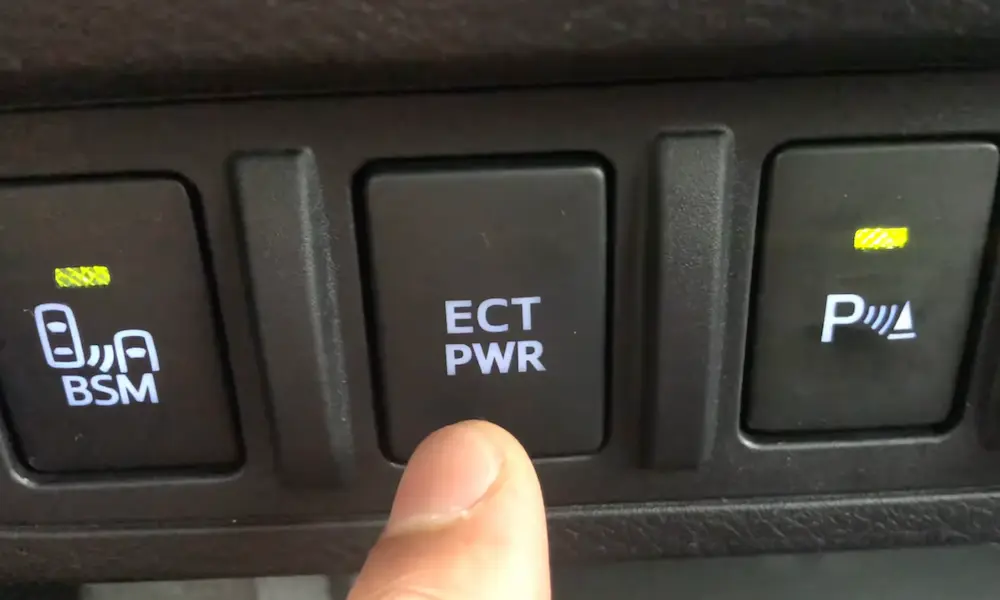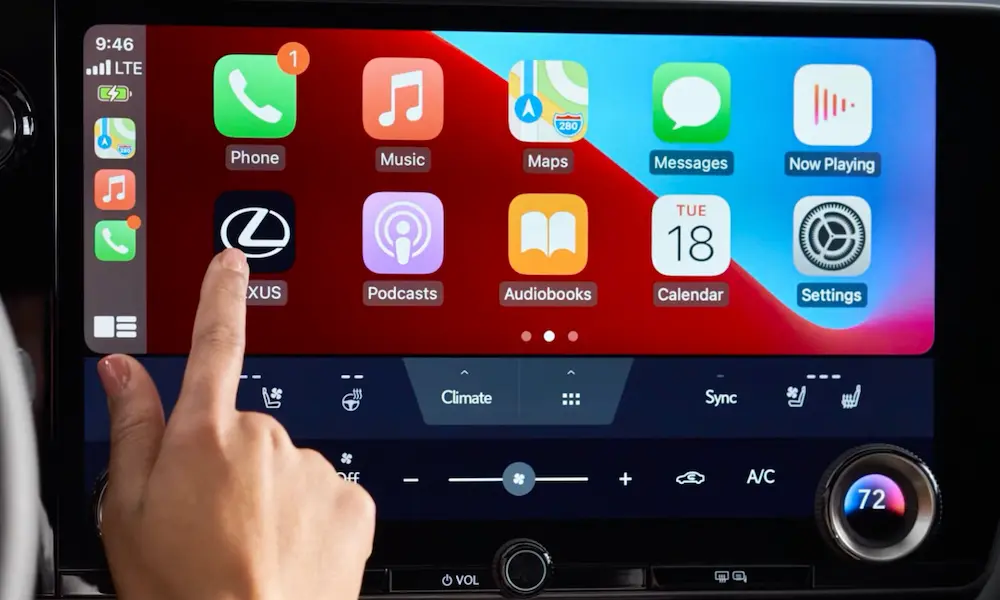Your Lexus isn’t detecting your key? Don’t worry—you’re minutes away from getting back on the road. This frustrating situation happens to many Lexus owners, but the solutions are often simpler than you might think. Let’s dive into why this happens and how to fix it without an expensive trip to the dealership.
Lexus Key Systems: How They Actually Work
Understanding how your Lexus key system functions can help you troubleshoot problems more effectively:
Modern Lexus vehicles use a passive entry and start system that consists of:
- Key fob transponder: Contains an RFID chip with a unique code
- Vehicle antennas: Multiple antennas throughout the car detect the key’s presence
- Control unit: Verifies the key’s identity and authorizes starting
- Immobilizer system: Prevents engine start without proper authorization
When you approach your vehicle, it sends out a low-power radio signal. If your key fob is within range, it responds with its unique identification code. Once verified, the doors unlock. A similar process occurs when starting the vehicle, but with shorter-range antennas near the start button.
This sophisticated system provides convenience and security but depends on proper battery power and unobstructed signal transmission to function correctly.
Why Your Lexus Can’t Detect Your Key
Dead Key Fob Battery: The Most Common Culprit
The number one reason your Lexus displays “Key Not Detected” is a weak or dead key fob battery. Most Lexus models use CR1632 coin batteries that typically last 1-2 years. When this tiny power source weakens, the RFID signal can’t reach your car’s receiver effectively, even when you’re sitting in the driver’s seat.
Signs your key fob battery is dying:
- Remote functions work inconsistently
- You need to stand closer to the car to lock/unlock
- The car occasionally shows “Key Not Detected” warnings
Physical Damage to Your Key Fob
Keys take a beating. They’re dropped, sat on, and occasionally take unexpected swims in puddles or washing machines. Even minor impacts can damage the delicate internal components of your key fob, disrupting connections or damaging the critical RFID chip that communicates with your vehicle.
Environmental Interference
Your key fob communicates using radio frequency signals that can be blocked or interfered with by:
- Other electronic devices nearby
- Large metal objects
- Strong radio transmitters in the area
- Certain building materials
This interference typically creates temporary detection problems that resolve once you move away from the source.
Vehicle Battery Issues
Sometimes the problem isn’t with your key at all. A weak car battery can affect the performance of your Lexus’s electronic systems, including those responsible for key detection. If your vehicle displays other electrical quirks along with key detection problems, your car battery might need attention.
Emergency Solutions: Getting Back on the Road Right Now
The Direct Contact Method
When your Lexus displays “Key Not Detected,” try this first:
- Hold your key fob directly against the start button
- Press the brake pedal (as you normally would)
- Push the start button with the key fob
This method works because it brings the key’s RFID chip close enough to the reader that it can communicate despite a weak battery or signal interference. Many Lexus owners have successfully started their cars this way, even with completely dead key batteries.
The Corner Technique
For even better results:
- Locate the corner of your key fob (usually where the internal chip is located)
- Press this specific corner against the start button
- Apply pressure while pressing the brake and pushing the button
This technique positions the internal RFID chip closest to the vehicle’s detection system, maximizing the chance of successful communication.
Using the Hidden Manual Key
If you can’t even get into your Lexus:
- Look for a small release button or slider on your key fob
- Press it to extract the hidden mechanical key
- Use this key in the manual door lock (often hidden behind a small cover on the driver’s door handle)
- Once inside, use the direct contact method to start the car
This backup system ensures you’ll never be completely locked out of your vehicle.
Solving the Problem Permanently
Replacing Your Key Fob Battery
Here’s how to replace your key fob battery:
- Extract the manual key using the release button
- Use the key to carefully pry open the fob case at the designated slot
- Remove the old battery (note its orientation)
- Insert a fresh battery with the positive (+) side facing the correct direction
- Carefully snap the fob back together
- Test all functions
Most Lexus models use CR1632 or CR2032 batteries, available at drugstores, hardware stores, and online for $3-5.
| Key Fob Battery Types by Lexus Model |
|---|
| Lexus ES, IS, GS: CR1632 |
| Lexus RX, NX, LX: CR2032 |
| Lexus LS, RC, LC: CR2032 |
| Lexus UX, CT: CR1632 |
Cleaning Internal Contacts
If a new battery doesn’t solve the problem, dirty contacts might be the issue:
- Open your key fob as described above
- Dip a cotton swab in rubbing alcohol
- Gently clean the circuit board contacts
- Let it dry completely (about 5 minutes)
- Reassemble the key fob and test
This simple maintenance can remove corrosion or debris that prevents proper electrical connections inside your key.
Testing Your Vehicle’s Battery
When key detection problems persist after replacing the fob battery, it’s time to check your car battery:
- Have your battery tested at an auto parts store (usually free)
- Look for voltage readings below 12.4V (indicates a weak battery)
- Check for corrosion on battery terminals
- Consider replacement if your battery is more than 3-5 years old
A healthy vehicle battery ensures all electronic systems, including key detection, function properly.
When You Need a Complete Key Replacement
If nothing else works, you may need a new key fob. Here are your options:
Dealership Replacement
- Cost: $200-500
- Pros: Guaranteed to work, professionally programmed
- Cons: Expensive, may require appointment and wait time
DIY Replacement
- Cost: $20-80
- Pros: Much more affordable
- Cons: Requires some technical skill
For the DIY approach:
- Purchase a replacement key shell online for your specific Lexus model
- Transfer the chip from your old key to the new housing
- Have the mechanical key cut at a locksmith based on your original key
Preventing Future Key Detection Problems
Implement a Battery Replacement Schedule
Don’t wait for complete failure. Mark your calendar to replace your key fob battery every 18 months, before problems start. This simple preventive measure can save you significant hassle.
Protect Your Key Fob
Your key deserves better treatment than being tossed around:
- Use a protective silicone cover to absorb impacts
- Keep keys away from water and extreme temperatures
- Don’t attach heavy items to your key ring (extra weight damages the ignition switch)
- Store spare keys in a protective case
Keep a Backup Key Ready
The smartest Lexus owners already know this secret: program two keys and keep one in a safe place. This backup ensures you’ll never be stranded by a key problem.
| Key Preparation Checklist |
|---|
| ✓ Replace batteries preventively |
| ✓ Clean contacts annually |
| ✓ Have a spare key programmed |
| ✓ Know the emergency start procedure |
| ✓ Keep a spare battery on hand |
Special Considerations for Newer Lexus Models
The latest Lexus models like the 2024 GX 550 feature advanced key systems, including key cards and digital keys on smartphones. These systems function differently:
- Key cards don’t contain batteries but still use RFID technology
- Digital keys rely on your smartphone’s battery and Bluetooth connection
- Both systems can experience detection issues for different reasons
If you’re using these newer systems:
- Keep your smartphone charged when using digital keys
- Position key cards directly against the start button when detection fails
- Store key cards away from other RFID cards to prevent interference
Model-Specific Key Detection Issues
Different Lexus models have their quirks when it comes to key detection:
Lexus IS Series The IS models sometimes show “Key Not Detected” warnings when the key is placed in certain cup holders or pockets that block the signal. Moving the key to a different location in the vehicle often resolves this issue.
Lexus RX Models RX owners report occasional key detection failures after the vehicle sits unused for extended periods. Starting the vehicle using the direct contact method and then driving for 15-20 minutes typically resets the system.
Lexus LS Flagship Models The sophisticated electronics in LS models can sometimes create false “Key Not Detected” warnings after disconnecting the battery or when certain fuses are replaced. A simple key reregistration procedure may be necessary.
Older Lexus Models (2006-2013) These vehicles may require a slightly different approach when using the direct contact method—try positioning the key against different spots near the start button if initial attempts fail.











